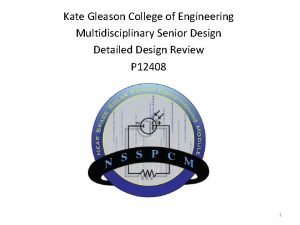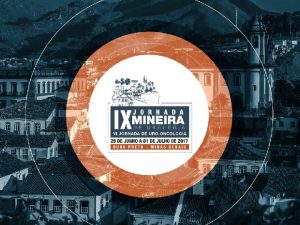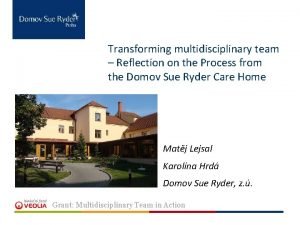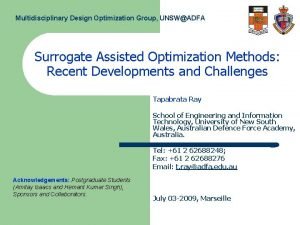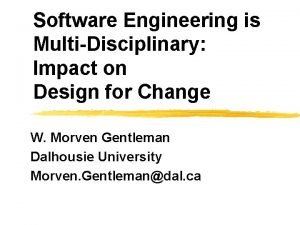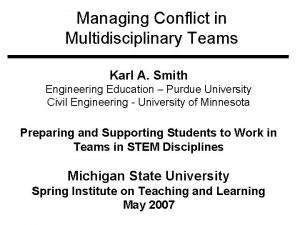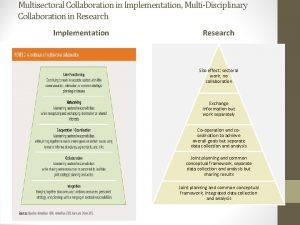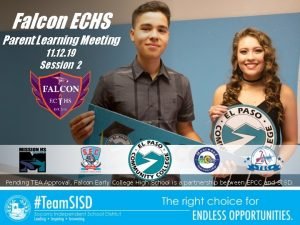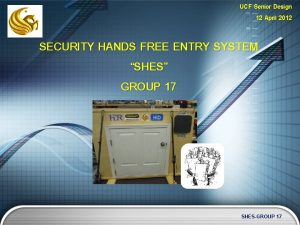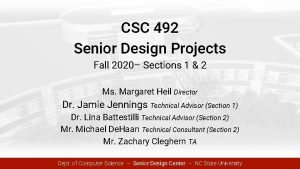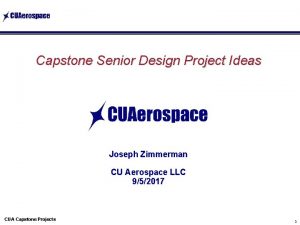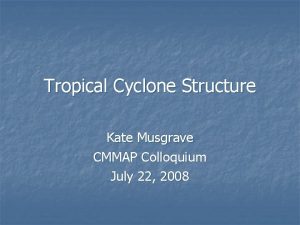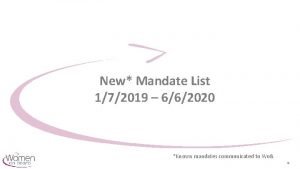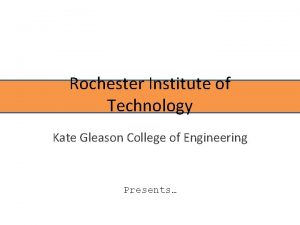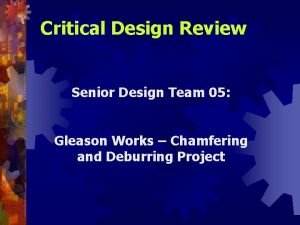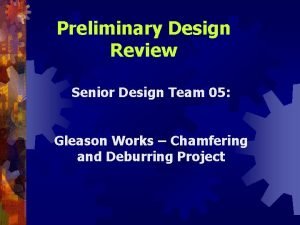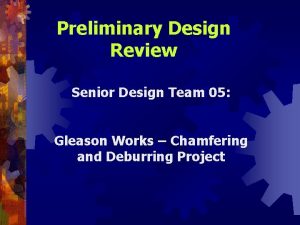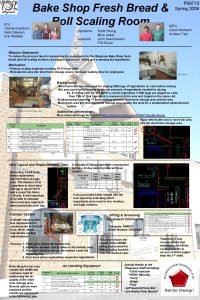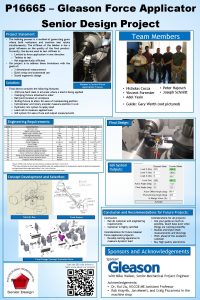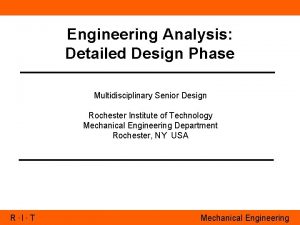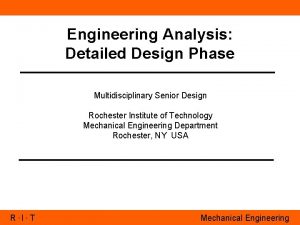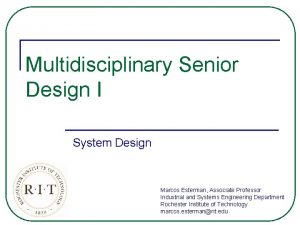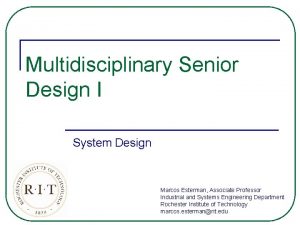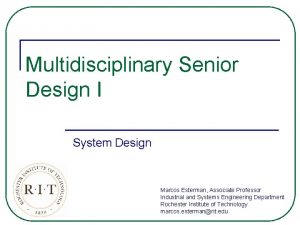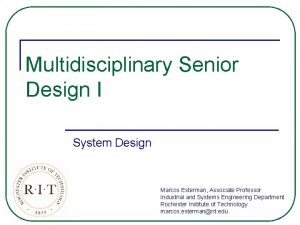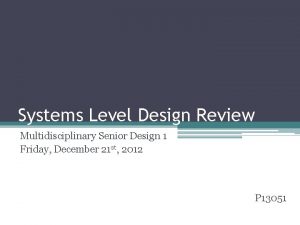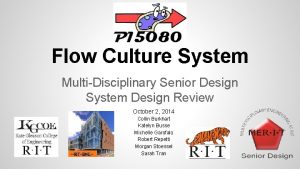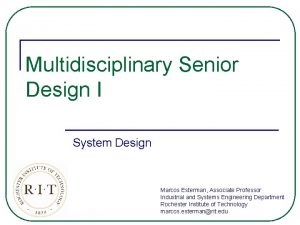Multidisciplinary Senior Design Conference Kate Gleason College of






































- Slides: 38

Multidisciplinary Senior Design Conference Kate Gleason College of Engineering Rochester Institute of Technology Project Number P 19347 Climate Con. Stroller Alice Hughes Mechanical Engineer/ Purchasing Steph Carter Mechanical Engineer/ Communications Emily Reynolds Biomedical Engineer/ Project Manager Vlad Yelizarov Electrical Engineer/ Systems Lead Jason Cook Electrical Engineer/ Facilitator

The Climate Con. Stroller is a baby stroller with heating and cooling capabilities to assist families living in extreme weather climates. Climate control is currently a useful feature missing from strollers on the market today. This stroller offers parents the freedom to safely bring their children outside on cold winter or hot summer days. Introduction This project is a continuation of P 18347 in which adjustable heating capability and appropriate ventilation was included. The goals of this project were to add in: • Modular, user controlled cooling method • Ensuring that the stroller is affordable, collapsible, lightweight, and safe The expected end result was an alpha/beta prototype with intellectual property belonging to the primary customers.

System Functionality

What Are the Main Components? Funnel Heat Sink In-line Fan TEC Tubing Seat CPU Fan

What is the TEC? • TEC is an acronym for Thermo-Electric Cooling Unit • This device uses the Peltier effect to create a heat flux between the junction of two different types of materials* • In short when electricity runs through a TEC, one side of it will get cold and the other side will get hot C H O O L T D Electricity *https: //en. wikipedia. org/wiki/Thermoelectric_cooling

What are the Heat Sinks? • Heat sinks are made of thermally conductive material so when part of them is heated up or cooled down, the rest of it will do the same • Ours are made from aluminum so they are cost effective and light weight • Air can flow through heat sinks in order to heat up or cool down the air Room Temp Air Cold Air Hot Air Blowing Room Temperature Adding a Heat/Cooling Source Air Through Heat Sinks Room Temp Air

What are the Fans? • Push air from one point to another • Allows air to move faster that it would naturally • Our fans are 4” in diameter, one is meant for a computer and the other is meant for a boat exhaust Air Flow

What is the Funnel? • The funnel feeds the air flow from the larger fan size down to the smaller tube size • It allows the system to use optimally sized fans and tubes • Our funnel was made using a 3 D printer Air Flow

What is the Tubing? • Tubing moves the cold air from one location to the next while keeping it cold • The tubing attaches to the seat at four locations to create a uniform cooling surface • Our tubing is made out of neoprene, that is the same material that scuba diving tubes are made out of Air Flow

What is the Seat? • The seat is the portion of the system that directly cools down the child • Air is blown into the seat rather than directly onto the child because of bradycardic reflex breathing complication in small children • Made out of leatherette and dry fast foam - same materials found in a vehicle cooling seat

What Are the Main Components? (Again) Funnel Heat Sink In-line Fan TEC Tubing Seat CPU Fan

Analysis and Process

Given a basic summary of our project and expectations Defining the Problem Next we met with our customers and clarified any details that we didn’t understand From this, we were able to make a use case scenario as well as a list of customer and engineering requirements Now with a fairly concrete idea of what the system should look like, we were able to move on to brainstorming

Use Case Scenario

Customer Requirements

The first step was to break down the system into its basic functions Brainstorming From here we could think of components that would work well for the individual functions of the system We then analyzed the individual parts to select what seemed to be the best solution This leaves use with the basic outline of a system, similar to the skeleton of a human

Functionality Tree Diagram

Brainstorming Chart

Example of Analysis

Final System Choice

Considerations: heat entering the system/ how much heat needed to be leaving the system, the system battery drain, estimated weights, and estimated prices Designed: layout for the coding and a box which would hold the fans, heat sinks, and TEC together while protecting little fingers from touching fan blades This was when we tried to confirm our system was a viable option Preliminary Analysis

Heat Analysis Schematic

Battery Consumption and Weight Estimate

Expected System Mock Up

Flow Chart for Coding Layout

Cooling System Box CAD Design

Now all parts were ordered so we could finally put our system together Building and Testing The seat was sewn together, tubing was cut to proper lengths, wires were soldered to components, a cooling system box was 3 D printed, and code was written for the electronic parts An assortment of tests were then run in order to confirm or deny our completion of each customer requirement

Seat Sewing Pattern

Sewing the Seat

Portion of Overall Code

User Interface Screen

Seat in Stroller

Table of Tests Test Name Question to Answer Thermoelectric Functionality Do thermoelectrics function in a hot environment? Fail Battery Capacity What is the battery capacity (life) in a hot environment? Success Emergency Shutoff Proper System Start-up and Shutdown Charge on Stroller Frame/Components Does the emergency shutoff work properly? Success Does the system turn off and on properly? Does the stroller have a measurable charge due to electrical components? Is the user interface intuitive and communicates properly with the system? What is the O 2/CO 2/humidity inside the stroller pod during use? Success What is the final stroller weight and footprint? Will the system function after experiencing bumps and vibrations from expected use? Do all components function and stay in place if the stroller gets suddenly bumped? What noise does the system output during maximum functionality? Does the system withstand dirt and water? Success User Interface Stroller Pod Air Quality Final Product Weight/Footprint Vibration Testing Stroller "Crash Testing" Audible Noise Testing Waterproofing Succeed or Failed? Success Not Completed Success Fail

We did encounter several issues, which in the end, made our prototype incapable of cooling down to the temperature desired: Problems We Encountered • A few components that were ordered broke, and others didn’t operate at the specifications they were supposed to • Delays in shipping and 3 D printing set back schedule and prevented us from completing all the testing we desired to get done • The heat analysis completed wasn’t utilized to its full potential when designing the system. This left us several TEC’s short of a working design and incorrect heat sinks for the job, as they couldn’t pull enough energy out of the system to keep it cool.

Broken Fan

Cooling System Box CAD Redesign

Prototype Cooling System Box Due to 3 D Printing Delays

Special Thanks To Maura Keyes Danielle Labelle Customer Kenneth Mihalyov Faculty Guide
 Kate gleason college of engineering
Kate gleason college of engineering Kate del castillo negrete trillo
Kate del castillo negrete trillo Erratic
Erratic Gleason 7 tratamento
Gleason 7 tratamento Gleason skoru
Gleason skoru Halimbawa ng banyagang salita
Halimbawa ng banyagang salita Score de gleason
Score de gleason Tumore prostata gleason 3+3
Tumore prostata gleason 3+3 Kristi gleason
Kristi gleason Multidisciplinary nature of environmental studies;
Multidisciplinary nature of environmental studies; Multidisciplinary team pros and cons
Multidisciplinary team pros and cons Multidisciplinary
Multidisciplinary Multidisciplinary vs interdisciplinary
Multidisciplinary vs interdisciplinary Multidisciplinary vs interdisciplinary
Multidisciplinary vs interdisciplinary Sunderlal bahuguna quotes
Sunderlal bahuguna quotes Multidisciplinary engineering definition
Multidisciplinary engineering definition Conflict in multidisciplinary teams
Conflict in multidisciplinary teams Multisectoral and multidisciplinary
Multisectoral and multidisciplinary Interdisciplinary multidisciplinary transdisciplinary
Interdisciplinary multidisciplinary transdisciplinary Epcc degree plans
Epcc degree plans Ucf senior design
Ucf senior design Ece senior design gatech
Ece senior design gatech Ncsu csc senior design
Ncsu csc senior design Ee senior design project ideas
Ee senior design project ideas Wake tech admissions
Wake tech admissions Early college high school at midland college
Early college high school at midland college Duluth energy design conference
Duluth energy design conference Kate musgrave
Kate musgrave Kate moles cardiff
Kate moles cardiff Anjula gupta
Anjula gupta Barfbag holes
Barfbag holes Kate scholberg duke
Kate scholberg duke Characters of she stoops to conquer
Characters of she stoops to conquer Quasivivo
Quasivivo Facts about kate middleton
Facts about kate middleton Kate amis
Kate amis Kate lybeer
Kate lybeer Kate simmonds porno
Kate simmonds porno Mary kate hoeve
Mary kate hoeve
